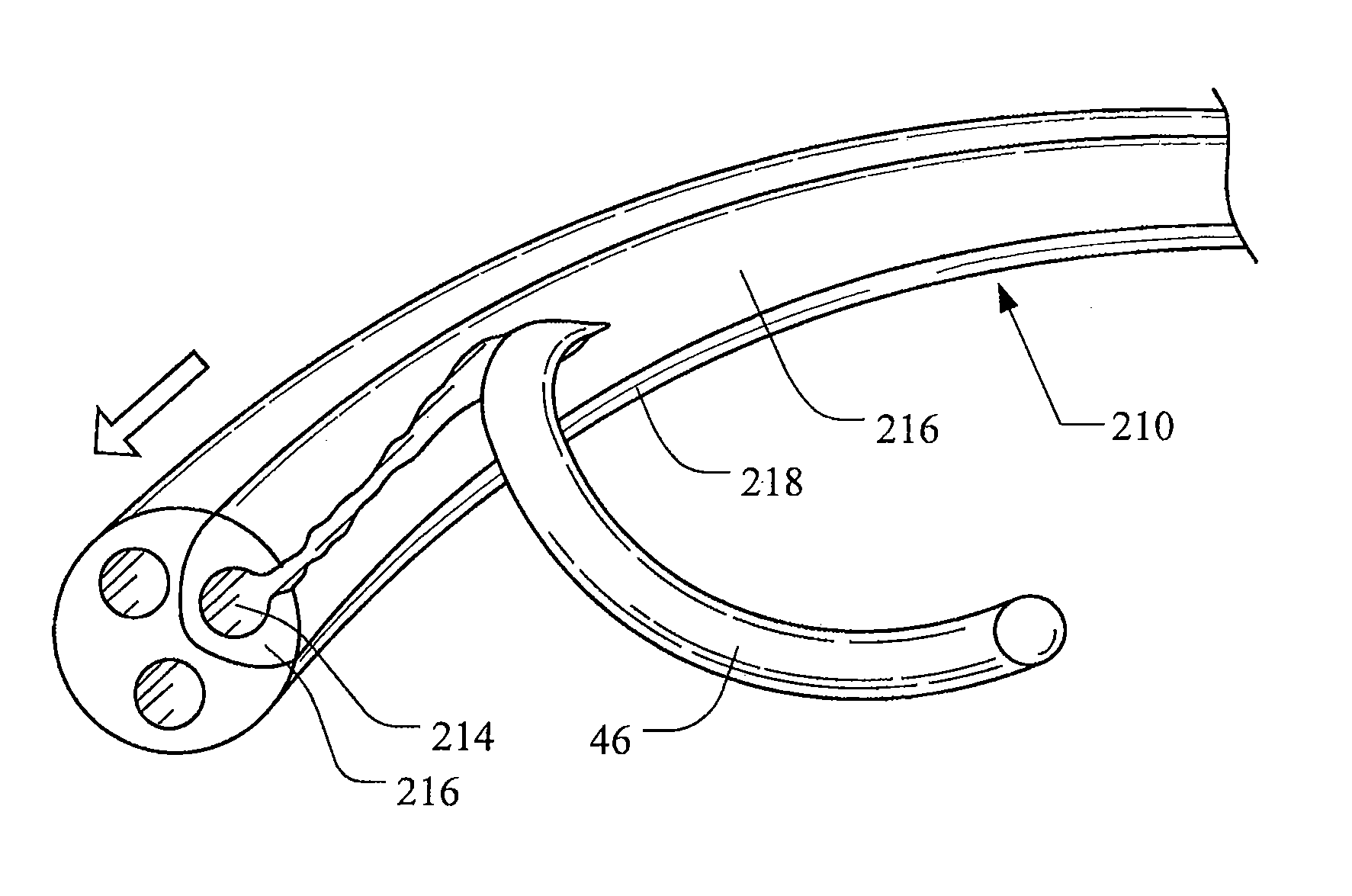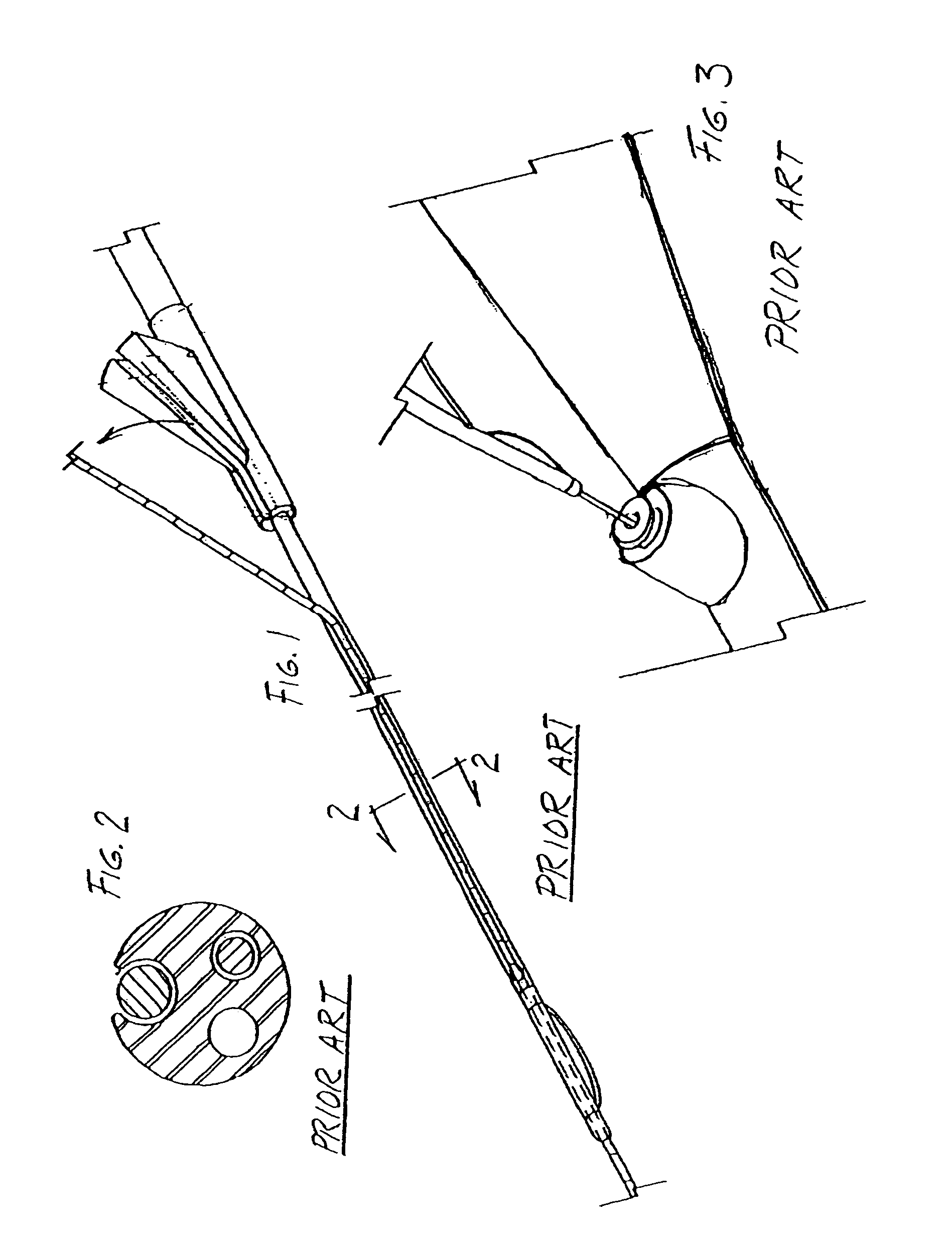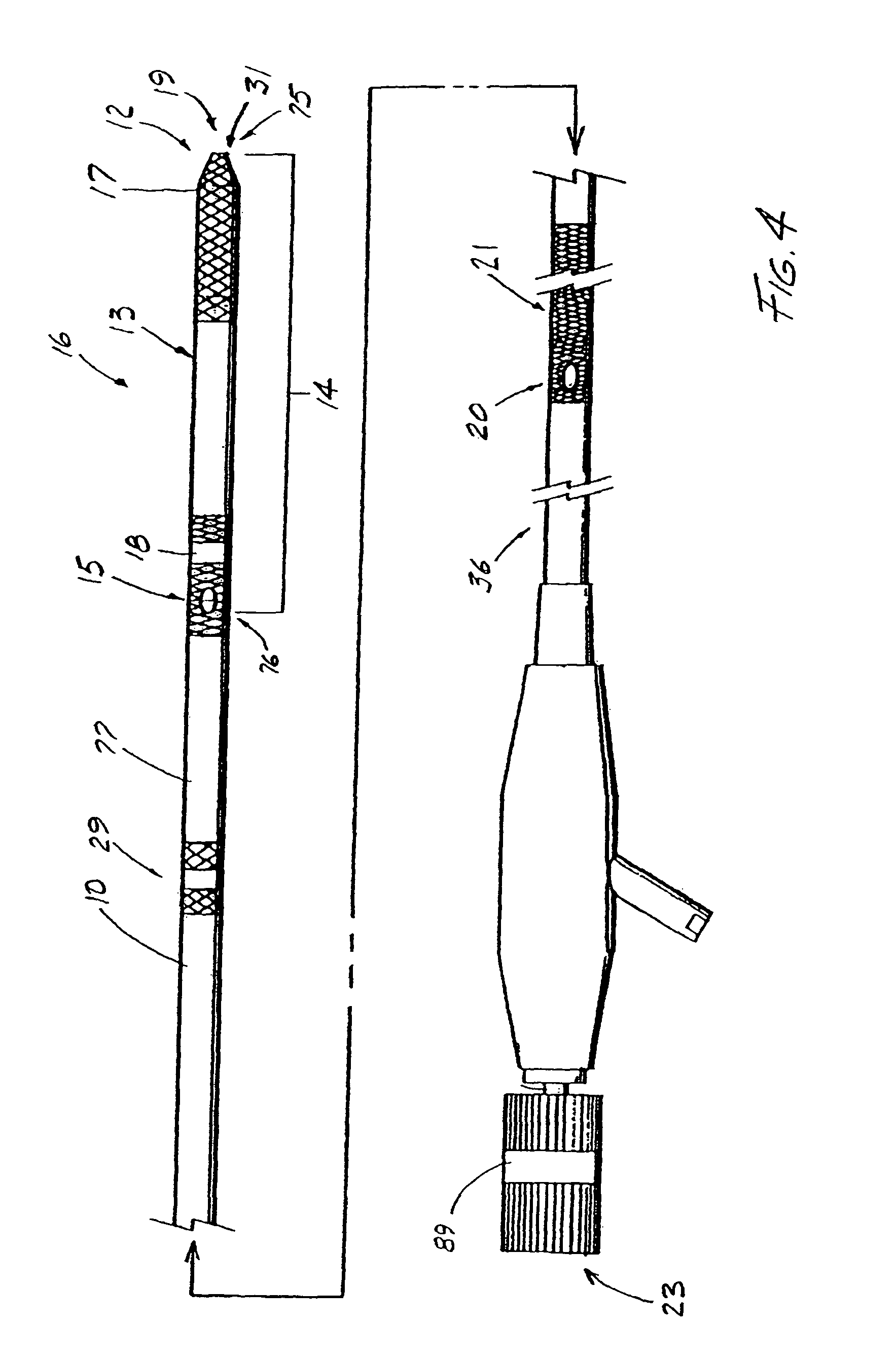Catheter with splittable wall shaft and peel tool
a splittable wall and catheter technology, applied in the field of catheters, can solve the problems of loss of wire guide access, excessive retraction of wire guide, and extreme difficulty for physicians to attempt, and achieve the effect of adding rigidity to the devi
- Summary
- Abstract
- Description
- Claims
- Application Information
AI Technical Summary
Benefits of technology
Problems solved by technology
Method used
Image
Examples
Embodiment Construction
[0091]An illustrative system and method for introducing a series of medical devices over a wire guide into a patient by remotely uncoupling the first device from the wire guide inside of the patient without utilizing a long wire or standard short wire exchange procedure is embodied in FIGS. 4-57. A first exemplary embodiment of the system is depicted in FIGS. 4-5, which comprises a first elongate medical device 10, such as the illustrative tubular member 77 or catheter that includes features similar to the GLO-TIP II® E.R.C.P. Catheter (Wilson-Cook Medical, Inc.), the catheter further including a coupling region 14 having a first, distal end 75 (oriented toward the distal end of the device), a second, proximal end 76, and an interconnecting passageway 31 sized and configured to receive a standard-diameter exchange wire guide 11 (e.g., METRO® Wire Guide; Wilson-Cook Medical, Inc.) or other guiding device suitable for coupling to the first elongate medical device 10. The coupling regi...
PUM
 Login to View More
Login to View More Abstract
Description
Claims
Application Information
 Login to View More
Login to View More - R&D
- Intellectual Property
- Life Sciences
- Materials
- Tech Scout
- Unparalleled Data Quality
- Higher Quality Content
- 60% Fewer Hallucinations
Browse by: Latest US Patents, China's latest patents, Technical Efficacy Thesaurus, Application Domain, Technology Topic, Popular Technical Reports.
© 2025 PatSnap. All rights reserved.Legal|Privacy policy|Modern Slavery Act Transparency Statement|Sitemap|About US| Contact US: help@patsnap.com



